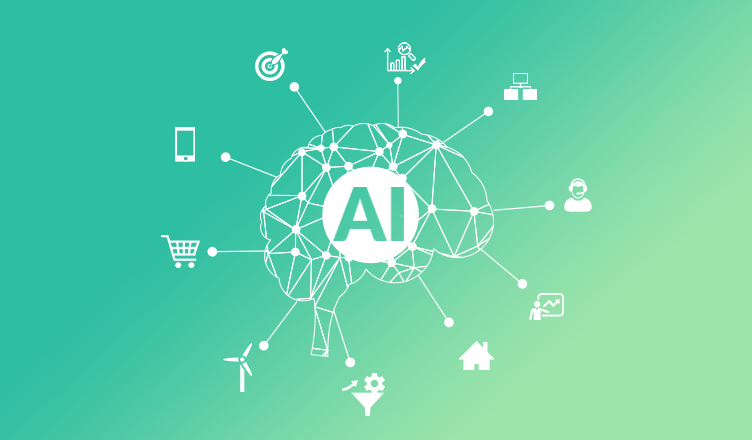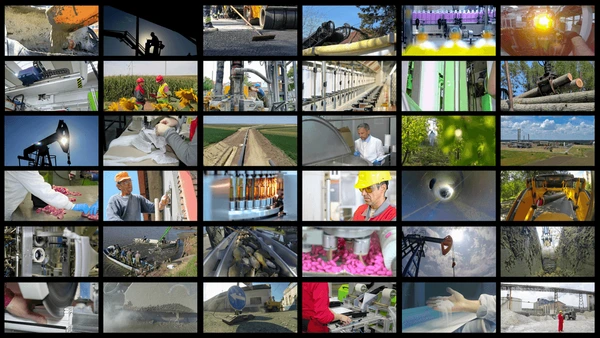Introduction: Why Transds Matters Today
In today’s fast-moving digital world, data doesn’t stay still. It transforms, adapts, and evolves. That’s where Transds enters, which is short for transitional data structures. More than a buzzword, Transds reshapes how we think about data and identity. On one hand, it fuels innovation across platforms, tools, and networks.
On the other hand, it supports personal expression through flexible, adaptable information design. Unlike rigid models of the past, Transds responds to context in real time. As a result, it empowers both technology systems and the people who build them. Whether you’re managing big data or crafting user-centric apps, Transds plays a growing role.
Furthermore, its structure reflects modern life—fluid, connected, and constantly changing. So, why should you care? Understanding Transds isn’t just about tech. It’s all about preparing your ideas, systems, and digital presence to thrive in the future. In the following sections, we’ll explore exactly how—and why—it matters.

What Is Transds? A Simple Explanation
Transds stands for transitional data structures—a modern way to think about data flow. It’s not a single tool, language, or platform. Instead, it’s a flexible data design mindset. This concept emerged from the growing need for real-time data transformation. As systems grow smarter, data must become more adaptive and context-aware. Transds helps solve this by allowing data to change shape based on need. For example, a user’s data may look different on a website than on a mobile app. This ability to shift supports both technical precision and personal expression. That’s what makes Transds relevant in today’s digital landscape — it represents the ongoing evolution of people and technology. Beyond that, it enables agile, intelligent, and user-focused digital experiences. From smart cities to e-commerce, Transds unlocks new levels of interoperability and customization. Its strength lies in merging innovation, identity, and system intelligence. In short, Transds redefines how information is created, shared, and understood. We can build systems that feel more alive and human by embracing this dynamic model. Next, we’ll explore why Transds is rising and how it solves real challenges.

How Transds Differs from Traditional ETL & Data Models
Transds offers a fresh take on data movement and transformation. It’s not like legacy ETL tools. ETL (Extract, Transform, Load) systems work with fixed pipelines and predefined schemas. They’re designed for batch jobs, not real-time interactions or context-driven logic. Transds changes that. It lets data evolve based on its destination and meaning. This shift supports real-time processing, something ETL systems struggle with. Moreover, Transds is flexible. It adapts to diverse sources, platforms, and user needs instantly. Instead of locking data into one format, it lets data flow and reshape as needed. This dynamic approach reflects how people express themselves digitally, fluidly, and personally. It’s not just a technical change. It mirrors how identity and behavior shift across platforms. Traditional data models feel rigid. Transds feels alive. That’s why it matters in the age of personalized digital experiences. As innovation moves forward rapidly, users expect technology to adjust to their needs, not vice versa. Transds helps create intelligent, efficient, user-friendly data environments that meet those expectations. Next, we’ll look at real-world examples to see Transds in action.
C

Benefits of Using Transds in Modern Applications
Transds transforms how modern systems manage and reshape data in real time. First, it boosts speed. Data flows faster, with minimal delay or manual effort. It also offers unmatched flexibility. Transds adapts to new formats and evolving data sources. This flexibility supports creative workflows and innovative system design. Next, Transds ensures data integrity. Each transformation is tracked, consistent, and context-aware. In real-time environments, this is crucial for trust and reliability. Moreover, it enables self-expression in how systems represent data, identity, and intent. It blends technology with human relevance, making applications more responsive and personalized. So, Transds isn’t just efficient—it’s meaningful in today’s data-driven world. Its impact reaches both infrastructure and user experience alike.
Practical Use Cases for Transds Across Industries
Transds brings real change across multiple industries by enabling more intelligent, adaptive data systems. In healthcare, it unifies patient records from devices, hospitals, and research—all in real time. This dynamic flow ensures better care, faster insights, and stronger data privacy compliance. Transds connects smart devices in the IoT world with seamless, context-aware communication. Sensors and machines interact meaningfully, even with shifting data types or formats. E-commerce thrives on personalization. Transds reshapes user data instantly to match behavior and preferences. It empowers flexible product recommendations that feel tailored and human, not robotic. Transds powers fraud detection and risk modeling in finance with live, evolving data inputs. It seamlessly integrates across platforms and empowers more intelligent, more secure decision-making. By blending technical innovation with identity-aware logic, Transds reshapes business and digital expression. Across industries, it’s a catalyst for performance, personalization, and future-ready systems.

Challenges and Limitations of Transds
While Transds offers flexibility and speed, it also brings some real challenges to manage. First, dynamic structures make governance and compliance harder to control across systems. Because data shifts shape, tracking consistency becomes more difficult without strict frameworks. Also, debugging Transds-based systems takes time, since input formats constantly change. Developers must plan for unpredictable behavior, which increases testing and resource demands. Next, semantic drift can occur. Different systems might misread flexible data with varied meanings. Data identity and context may become unclear or even misleading without strong rules. Moreover, real-time transformations need more memory and processing power, especially at scale. That can lead to performance issues if not properly optimized or distributed. Still, despite these limitations, Transds continues to inspire innovation in digital identity and data architecture. With thoughtful design, its challenges can become powerful learning opportunities in the evolving tech landscape.
Future Trends and Evolving Technologies in Transds
The evolution of Transds is closely connected to cutting-edge technologies and ongoing digital transformation. Transds systems will become smarter as AI evolves, adapting schemas through predictive learning models. This allows more personalized, real-time experiences based on user behavior and system intent. Looking ahead, edge computing will bring Transds nearer to data origins, cutting down latency and enhancing overall performance. Instead of centralized processing, transformations will happen at the network edge—faster and more securely. Schema evolution is also gaining ground. Systems will automatically adjust data models as needs change. This shift supports the rise of contextual data modeling, where meaning adapts with environment and usage. These trends will redefine how data, technology, and personal identity interact. Transds empowers more intuitive, human-centered experiences—where innovation meets flexible structure. In the coming years, expect Transds to reshape industries and influence how systems communicate and evolve.
Frequently Asked Questions About Transds
What does Transds mean?
Transds refers to transitional data structures—adaptable frameworks that evolve based on context and requirements. Unlike static formats, Transds adapts in real time, reshaping data based on purpose or environment. This adaptability combines innovation and self-expression in today’s fast-moving digital landscape. It empowers systems to evolve with users, not limit them to rigid rules. Moreover, it reflects a more profound shift, where technology mirrors how we change, connect, and think. Transds supports contextual identity, letting platforms respond to who we are, not just what we input. From AI tools to innovative platforms, its impact touches function and meaning.
Is it a tool/software?
Transds is not a tool, app, or software you can install or buy. Instead, it’s a conceptual framework—a way of thinking about how data should behave. Rather than being static, Transds adapts to context, purpose, and real-time conditions. This dynamic nature brings innovation and self-expression into the world of data design. It allows systems to reflect identity and meaning, not just technical structure. So, while tools support Transds, the idea goes beyond them—it shapes how future tech thinks.
How does it differ from ETL?
Unlike traditional ETL (Extract, Transform, Load) methods, Transds offers a fundamentally different and more dynamic approach.ETL relies on static pipelines with fixed logic and formats. In contrast, Transds adapts, changing its structure based on context and data flow. It supports real-time transformation, not batch jobs delayed by rigid scheduling. Moreover, Transds reflects innovation and identity by embedding meaning in data structures. While ETL processes move data, Transds lets it evolve and interact. Thus, Transds isn’t just about moving information—it’s about shaping digital expression dynamically.
What languages/frameworks support it?
Transds thrives in flexible, dynamic programming environments. Languages like Python and Scala support practical shaping of real-time data. Python’s versatility helps model transitional data with fewer constraints. At the same time, Scala supports efficient stream processing and adaptable schema management. Frameworks like Apache Beam and GraphQL power Transds architectures. These tools enable context-aware data modeling and semantic adaptability. In today’s digital world, such tech reflects personal identity through adaptive structures. Thus, Transds merges self-expression and innovation within fluid programming ecosystems.
Which industries benefit most?
Transds brings value where data must adapt fast and flexibly. Healthcare uses it for real-time patient and genomic data exchange.
Finance applies it to context-aware risk analysis and fraud detection. In e-commerce, personalization is enhanced through dynamic user data models. Transds plays a key role in smart cities by enabling integrated IoT networks and responsive, data-driven decisions. These industries blend technology and identity, shaping systems around human needs. Thus, Transds fuels both innovation and self-expression in the digital era.
Conclusion: Should You Adopt Transds?
Transds is more than a data concept—it’s a shift in digital thinking. It enables systems to adapt more effectively, respond in real time, and operate with contextual intelligence. In today’s fast-moving world, static data models fall behind. But with Transds, data flows freely, shaped by context and purpose. This unlocks new forms of innovation, personalization, and digital expression. As industries evolve, so must the tools we use to manage information. Transds offers agility, speed, and meaning in real time. Moreover, it connects technology with identity in ways we’ve never seen before. If you’re building for the future, consider learning and experimenting with Transds now. Start small—explore dynamic schemas or test transformation layers. The next decade belongs to systems that can listen, adapt, and evolve. Transds is one such approach. So, yes—adopting it might just be the smartest move forward.